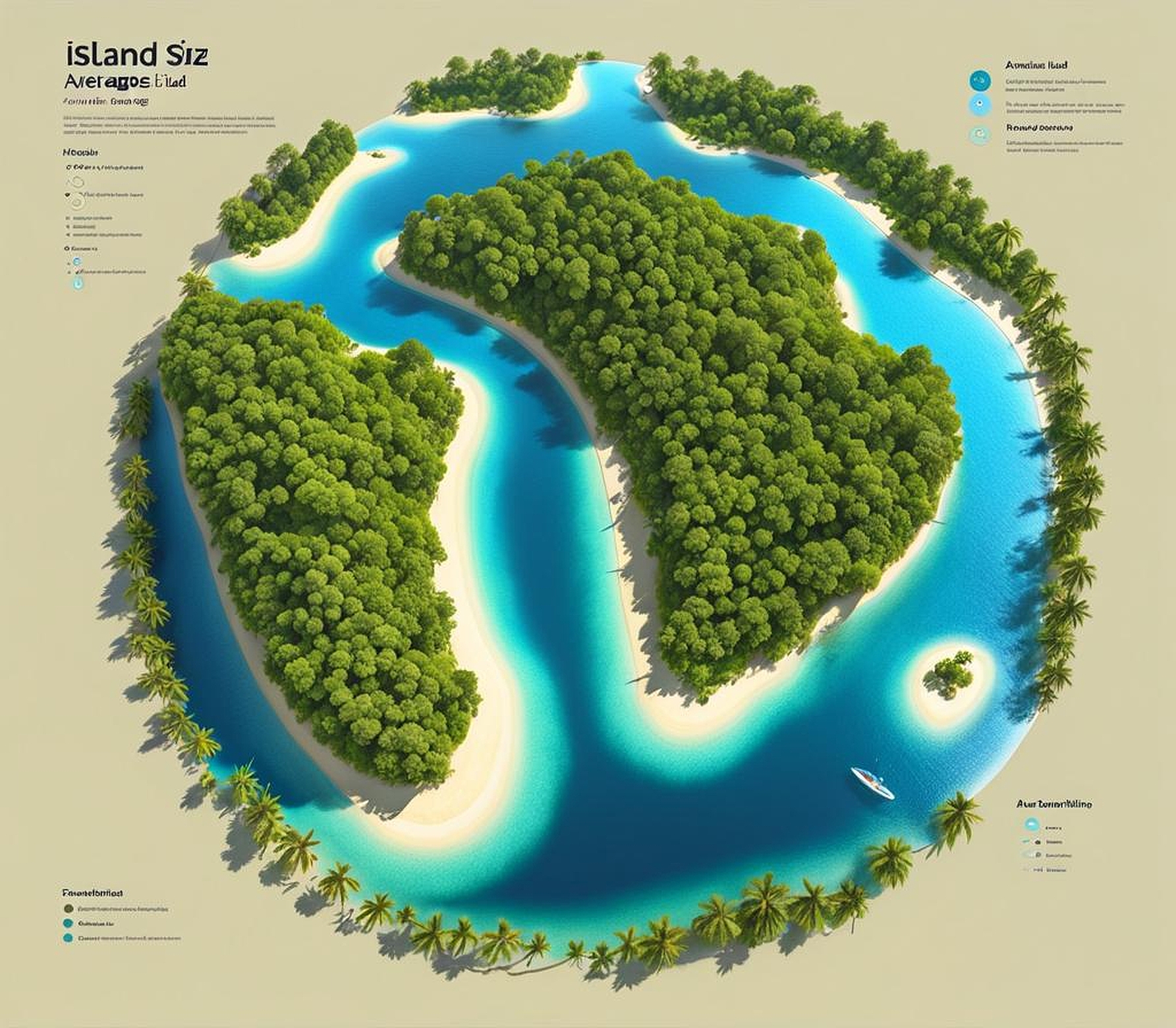Delving into the intriguing realm of island geography, we embark on a journey to unravel the captivating concept of average island size. This intricate metric holds profound significance, unveiling insights into the intricate tapestry of geological formations, ecological dynamics, and even the human imprint on these isolated landmasses.
Understanding Average Island Size
The average island size refers to the mean land area encompassed by islands within a specific region or globally. This measure serves as a quantitative representation of the typical expanse these landmasses occupy, providing a benchmark for comparative analysis and revealing underlying patterns. Comprehending average island size is paramount, as it sheds light on factors such as geological processes, climatic influences, and anthropogenic activities that shape these unique environments.
Islands can vary remarkably in size, ranging from diminutive islets to vast archipelagos spanning thousands of square kilometers. The diversity in island sizes is a testament to the intricate interplay between tectonic forces, erosional processes, and the relentless sculpting by wind and waves. Unraveling the average size unveils insights into the delicate equilibrium between these natural forces and offers a glimpse into the evolutionary trajectory of these isolated ecosystems.

Methodology for Calculating Average Island Size
Calculating the average island size necessitates a robust methodological approach that encompasses data collection, validation, and rigorous analysis. Researchers rely on a multitude of data sources, including satellite imagery, aerial surveys, and on-the-ground mapping initiatives, to accurately measure and catalogue the land area of individual islands. This comprehensive data set is then subjected to statistical analysis, employing advanced techniques and formulas to derive the mean island size.
However, the process is not without its challenges. The dynamic nature of islands, influenced by factors such as coastal erosion, sea-level fluctuations, and even human interventions like land reclamation, necessitates regular updates and adjustments to the data. Additionally, delineating the boundaries of islands can be complex, particularly in cases where islands are interconnected or situated in close proximity to larger landmasses.
Global Statistics on Island Sizes
Exploring the global distribution of island sizes reveals fascinating insights and trends. While the average island size varies across regions and continents, certain patterns emerge. For instance, the small island area tends to predominate in regions like the Caribbean and the South Pacific, where volcanic activity and tectonic processes have shaped a multitude of diminutive landmasses.
In contrast, regions such as Southeast Asia and Oceania boast a greater prevalence of large island size and large island area, with landmasses like Borneo and Papua New Guinea standing as prominent examples. These larger islands often exhibit diverse topographies, harboring unique ecosystems and serving as biodiversity hotspots.
Interestingly, the distribution of island sizes also unveils outliers – islands that deviate significantly from the norm. The smallest island size can be found in remote atolls and coral islets, barely rising above sea level, while the biggest island size is reserved for continental landmasses like Greenland and New Guinea, boasting vast expanses that challenge the very definition of an island.
Case Studies: Notable Island Size Distributions
To gain a deeper understanding of island size dynamics, it is instructive to examine specific case studies that showcase unique size distributions within archipelagos or island chains. One such example is the Hawaiian Islands, where the largest island area is occupied by the Big Island of Hawaii, a vast landmass characterized by diverse ecosystems ranging from lush rainforests to arid volcanic landscapes. In contrast, the smaller islands like Kahoolawe and Lanai exemplify the small island size spectrum, each offering distinct ecological and cultural narratives.
Another intriguing case study is the Galapagos Islands, an isolated archipelago renowned for its exceptional biodiversity and evolutionary significance. While the average island size in the Galapagos is relatively modest, the size distribution ranges from the maximum island area of Isabela Island, which accounts for more than half of the total land area, to the tiny islets like Daphne Major, where groundbreaking research on natural selection has been conducted.
The significance of understanding average island size extends far beyond mere geographical curiosity. This metric has profound implications for biodiversity conservation, ecosystem management, and sustainable resource utilization. Islands with small island area and small island size often harbor unique and fragile ecosystems that are highly vulnerable to external pressures, such as invasive species, climate change, and human activities. Conversely, larger islands with greater average land area may offer more resilience and capacity to support diverse flora and fauna.
Moreover, the average island size plays a crucial role in shaping human settlement patterns, resource availability, and economic opportunities. Islands with large island size and maximum island area are more likely to support larger populations and a diverse range of economic activities, while smaller islands may face challenges in terms of resource scarcity and limited development potential.
Additionally, the average island land metric is increasingly relevant in the context of sustainable tourism and cultural preservation. Islands with unique size distributions often attract visitors seeking to experience the distinct landscapes, ecosystems, and cultural traditions that have evolved in these isolated environments. Responsible management and conservation efforts are essential to ensure that the natural and cultural heritage of these islands is preserved for future generations.